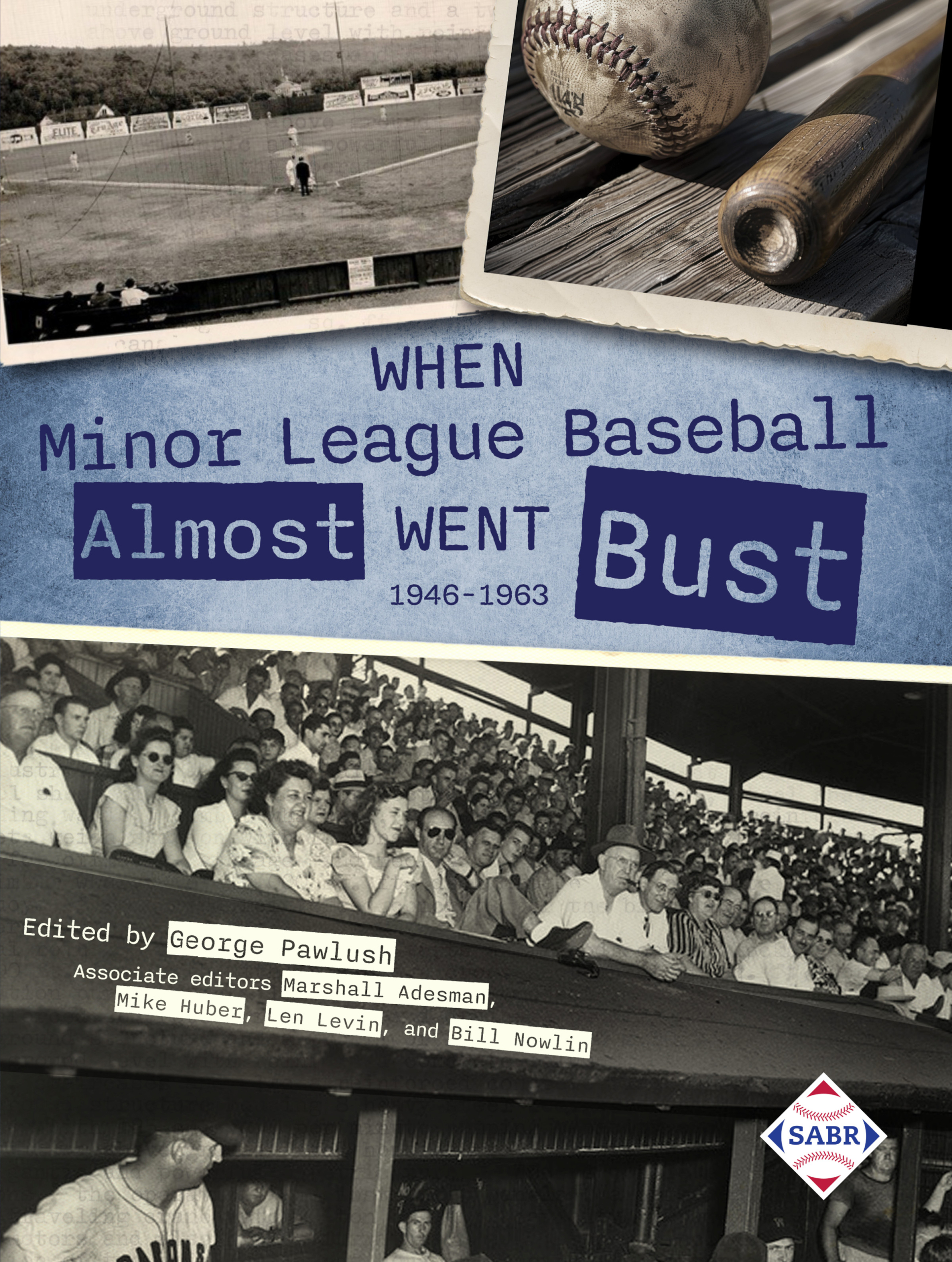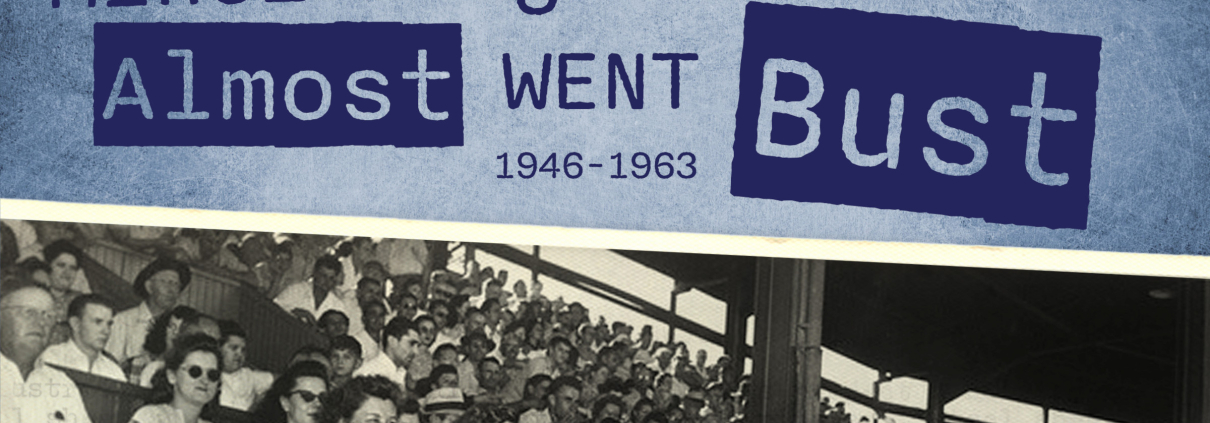Pete Hughes: Great Player, Bad Timing
This article was written by Will Christensen
This article was published in When Minor League Baseball Almost Went Bust: 1946-1963
 A great quote sums up why most people—even dedicated baseball fans—have likely never heard of Pete Hughes.1 The sports editor of the Winnipeg News wrote about the right fielder for the local club in the legendary ManDak League in 1953:
A great quote sums up why most people—even dedicated baseball fans—have likely never heard of Pete Hughes.1 The sports editor of the Winnipeg News wrote about the right fielder for the local club in the legendary ManDak League in 1953:
“For our money, Hughes gives away more runs than he manufactures. He’s too slow afoot and almost has to hit a triple to get to first base. Then, in the field, he’s not a very sure catch when he does manage to get under a ball. If we were manager Ken Meyers, we wouldn’t get rid of Hughes, but we’d use him in a pinch hitting role, where he’d no doubt prove valuable to the club.”2
This was written after a game in which Hughes, at the advanced age of 38, dropped two fly balls (his first two errors of the season).3 But what Maurice Smith did was suggest turning the league’s most potent offensive force into a bench warmer.
For all Hughes did that season was set a league record for home runs (13) while leading the league in RBIs—finishing fifth in batting at .324—and leading the league in walks.4 Preliminary research indicates Hughes probably walked around 100 times in the 74 games he played,5 so his OBP probably was in the neighborhood of his career .530 average.
That’s right: A .530 OBP for an entire career—of 1,333 games. As you might suspect, that’s a record for anyone who played more than a handful of games in Organized Baseball.
In fact, Hughes ranks first or second—usually first—in the most important averages as far as assessing offensive value among minor-league players who played at least 1,000 games:
On-Base Percentage
- Hughes, .530
- Joe Bauman, .487
- Howard Weeks, .481
Slugging Average
- Bauman, .702
- Gordon Nell, .639
- Hughes, .637
OPS
- Bauman, 1.189
- Hughes, 1.167
- Pud Miller, 1.062
Secondary Average
- Hughes, .674
- Bauman, .652
- Joe Pactwa, .542
Run Average6
- Hughes, .592
- Bauman, .589
- Ray Perry, .485
Runs Created / Game7
- Hughes, 13.88
- Bauman, 12.78
- Buzz Clarkson, 10.83
Runs Created / Year8
- Hughes, 171
- Bauman, 163
- Rasty Wright, 144
Until steroids came along, Joe Bauman was the all-time record-holder for home runs in a season, at 72.9 No less of a media celebrity than Keith Olbermann wrote about him.10 As for Hughes, he got a brief back-of-the-book article by Tony Salin in Baseball’s Forgotten Heroes (Bauman got a full profile in the same book), and that’s pretty much it.11
Who was Pete Hughes? Good question. Little is known about his life before he broke into pro ball at the relatively advanced age of 22, and less is known about him after he left following that 1953 season. Hughes apparently got into baseball during high school in Los Angeles, and later on, he was a swimming pool technician.12 Along the way, he got married and had a son and daughter,13 but if a post-career profile, aside from Salin’s, was written about him, it remains to be discovered.
In the years from 1937 to 1953, however, and particularly after World War II, Hughes drew a fair amount of ink while dominating every league he played in. He never played more than 134 games in a season, so, aside from the walks, his season totals don’t look overly impressive. Here’s what Hughes did from 1946 to 1952:
Now here’s what Hughes’ average OB season after World War II was in a 162-game context:
That’s an average of 412 times on base per 162 games, without counting his HBPs. For context, the major-league record for one season is 379 in 153 games.
At this point, one might ask: Why didn’t this guy get even a sniff at the majors?
He didn’t fit the profile of what a good ballplayer was supposed to be. Because of two broken legs early in his career,14 Hughes didn’t have much speed, so he couldn’t cover a lot of ground in the field.
Also, his timing stunk. In 1941 Hughes hit .318 in the Class-B Western International League, with a league-leading 34 homers, 125 RBIs, a league-leading 139 runs, and, of course, a league-leading 156 walks. He appeared poised for a promotion, even to the Double-A Pacific Coast League.15
But Uncle Sam came calling, and Hughes instead served in the US Army Air Corps for the next four years.16 When he’d done his duty, Hughes was 31, and major-league ballclubs weren’t interested in a 31-year-old slow-footed rookie who hadn’t played higher than Class-B ball—no matter how many runs he put on the scoreboard.
Hughes put a ton of runs on the scoreboard. His teams, fans and sportswriters noticed. Hughes played on five championship teams and was an all-star eight times in 12 years.17
Times change, and there’s no doubt that had Hughes come along more recently, he not only might make the majors, but might have a career. It might not be an all-star career, but it would be enough for him to accumulate a few back-of-the-baseball-card highlights along the way.
WILL CHRISTENSEN is a former journalist, avid researcher, and certified minor-league baseball nut. He has been a member of SABR since 1986 and has been interested in minor-league baseball most of the time since then. His first game to watch was the Columbus Jets during the team’s final season in 1970.
ACKNOWLEDGMENTS
This article was edited by Thomas Rathkamp and fact-checked by Tony Escobedo.
NOTES
1 Hughes has often been referred to as Gabriel “Pete” Hughes, but the best evidence suggests that Gabriel was his middle, not first, name, based on his World War II registration card, the Social Security Index and Hughes’s obituary. Also, according to multiple census forms, he was listed as a Junior.
2 Maurice Smith, “Time Out with Maurice Smith,” Winnipeg Free Press, May 28, 1953: 26.
3 “Brandon Routs Royals by ii-2 at Winnipeg,” Minot (North Dakota) Daily News, May 28, 1953: 10.
4 “Scarborough Tops Hitters,” Winnipeg Free Press, September 4, 1953: 24. The ManDak League didn’t release complete official statistics, but in this report, Hughes was called “the most walked man in the league.”
5 An examination of the box scores of 23 random games Hughes played in 1953 shows 31 walks compared with 76 at-bats. Extrapolating that ratio out to the 241 at-bats noted in the Winnipeg Free Press would result in 98 walks.
6 Run Average was unveiled in The New Bill James Historical Baseball Abstract (New York: The Free Press, 2001). It is an attempt to put run production into the context of a batting average and is figured thus: (Runs + RBI) / At-bats.
7 The method of figuring runs created was taken from formulas presented in the All-Time Major League Handbook, (Skokie, Illinois: Stats Inc. Publishing, 1998).
8 Runs Created per Year is runs created per 144 games.
9 See Bauman’s SABR biography by Bob Rivers at https://sabr.org/bioproj/person/joe-bauman/.
10 Keith Olbermann, “One for the X-Files in a Season of Inalienable Glory, Roswell’s Joe Bauman Hit 72 Homers,” Sports Illustrated, August 31, 1998. https://vault.si.com/vault/1998/08/31/one-for-the-x-files-in-a-season-of-inalienable-glory-roswells-joe-bauman-hit-72-homers, accessed January 26, 2023.
11 Tony Salin, Baseball’s Forgotten Heroes (Lincolnwood, Illinois: Masters Press, 1999). Hughes’s profile filled two pages; Bauman’s 16.
12 “Pioneer League Moundsmen No Mystery to Pete Hughes,” Salt Lake (Utah) Telegram, August 10, 1939: 13; “Obituaries,” Riverside (California) PressEnterprise, August i, 2001.
13 Clyde Giraldo, “Stengel Says Other Clubs Ought to Hunt for Hawkins,” San Francisco Chronicle, February 26, 1946: 18; “Obituaries,” Riverside PressEnterprise. It isn’t clear whether Edith Hughes was the mother of Hughes’s two children.
14 Ty Cobb, “Inside Stuff,” Nevada State Journal (Reno), April 17, 1949: 11. A broken leg in 1938 limited Hughes to just eight games that year.
15 “Dan Escobar May Be Lost Thru Draft,” Oregon Journal (Portland), March 11, 1942: 15. Hughes had been acquired by the Portland Beavers of the Pacific Coast League and was expected to at least get a tryout with the team that spring.
16 “Stengel Says Other Clubs Ought to Hunt for Hawkins.” Another story says Hughes served in the Philippines. Hughes said he was overseas for a year but gave no location.
17 Lloyd Johnson and Miles Wolff, eds., Encyclopedia of Minor League Baseball, Third Edition (Durham, North Carolina: Baseball America, 2007). The championship teams were Ogden 1940, Spokane 1941, Las Vegas 1949, El Centro 1950, and Tijuana 1952. Hughes also was an all-star in 1937 (DeLand), 1939 (Ogden), and 1947 (Phoenix).



